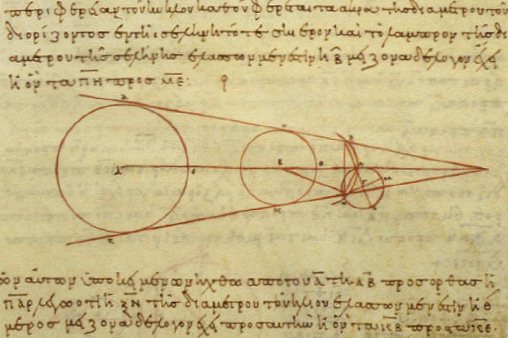We are bounded in a nutshell of Infinite space: Blog Post #9, Free Form #1: The Art of Celestial
Creation
Van Gogh, Ptolemy, aboriginal tribes, Native Americans, the
Nahualt, Aztec, Maya, Inca, the Druids, Greeks, Hellenists, the Caliphates of
Córdoba and Baghdad, Chinese scholars and Edmund Halley, they had many things
in common, but let us focus on one.
Taking a break from problem sets and outer
space, we turn to how humanity has, for millennia, interpreted the heavenly
realms and the reaches of their sight, enhanced it, and continued to study what
was once considered a rotating sphere around a flat land. Since the time of
prehistoric civilizations like the Australian Aboriginals, humans have recoded
their observations of the sky, finding in it beauty, a guide, and a canvas on
which their individual identities could be painted. This image illustrates how aboriginal
painting described a local bird (an emu) as part of the night sky.
True artistic expression, imagination, and
consciousness are curious things, traits found exclusively (as far as we know
and can prove) in humans as part of their essence, qualities that have served to
set us apart from other living beings. Of course, the formation of thought
brought with it decisions, morality, and the ability to understand right and
wrong, the effect of eating from the tree of the science of good and evil, as
it were. But one of the greatest gifts consciousness has given us is curiosity
and the analytic capacity to look for our origins, to understand the stardust
within us and look towards the rest of the universe, outside our pale blue dot.
Among the first to find beauty as well as
science in the universe were the Ancient Greeks, who began to deduce basic
properties of the natural world and interpret the movements of the stars. Not
only did they name most of the stars and record the groupings of stars into
constellations that are still used today, they also created the basic words that
astronomy uses, like galaxy-γαλαχτος (milky circle) ,

star – αστερι (star), astronomy- αστρονομος ( story of stars), among many others. Among their great scientists
like Hypatia, Aristarchus, Ptolemy, Eratosthenes, and Democritus, were the
discoverers of orbits, the knowledge the Earth was a sphere, the mapping of the
stars, the recognition some stars (planets) were quite odd from the rest, and
some texts that reference the possibility of a heliocentric solar system. But
the Greeks also projected their myths and great stories onto the stars,
highlighting the battles of Heracles, Orion, Perseus, Pegasus, the mythical
beasts of old, like the Nemean Lion, Scylla, Cerberus, chimaera, bears, fish,
dragons and Hydra, and tools that meant greatly to their civilization, like scales,
triangles, and swords.
In another corner of the European continent, ancient Druid and
pre-Germanic tribes, an ancient civilization created a grouping of immense stones
that coincide with the movements of the sun, possibly used to tell the time of
year as well as agricultural seasons.
This is Stonehenge, the English archaeological
marvel that clearly demonstrates the culture’s analysis of the movement of the
sun and clearly placing massive stones in a final place so they may serve as a
tool to them and evidence of humanity’s fascination with that outside our
atmosphere for generations to come.
Moving to another continent altogether, the Native Americans
across North and South America interpreted celestial bodies in different ways
and learned to analyze and interpret their movements to aid in measuring time,
agriculture, and festivals of every kind. From Aztec sacrificial rites to Mayan
Solar Calendars and Inca stones to highlight the different solstices throughout
the year, these civilizations saw importance in the stars, interpreted them as
messages from the gods, and preserved a deep understanding of the stars throughout
their art and architecture.
As in the case of Teotihuacán, the ancient
Mesoamerican city the Aztec found and renamed, giant buildings were made to
align with the summer and winter solstices, these civilizations show an
appreciation of the mathematics and order that govern much of celestial
movement, as well as placing the stars in the highest regard possible.
North of the Aztecs, the Hopi Tribe of the Great Mesas of Southwestern
North America also had a deep recognition of the stars in their art and
culture.
This image illustrates Prophecy Rock, a
record of the history and future of the Hopi people, identifying key points in
their history, mainly the times of great change. This stone, illustrating the
Sun and the stars, shows periods of human history, the foretelling of great
calamities to the People, as well as the recounting of tragedies passed. Here
the stars take on another meaning within the art and culture of a civilization,
they are the foretellers of the future, images that identify the passage of
time and the coming of change. This intuition is seen across many
civilizations, who looked beyond the dirt and land they inhabit to see the immenseness
that is found beyond a thin cap of gas, rather they entrusted their futures to
that which always beyond their grasp.
Closer to the present, there are modern artists who also
interpret the stars above. One of the clearest paintings of the starry night
is, well, the Starry Night, by Vincent Van Gogh.
In the epitome of the Post-impressionist
artistic movement, the stars above are focused on and detailed, the handiwork
of God protecting the small town, the view of divine creation as the maximum
exponent of art and beauty in the universe.
It is this same sky that inspired Van Gogh,
Galileo, Copernicus, and so many other artists and scientists to pursue the
nature of the stars, the twinkling points of beauty that entice us all to reach
for them in an attempt to briefly glimpse them and understand them, including
myself:
References:

.jpeg)







